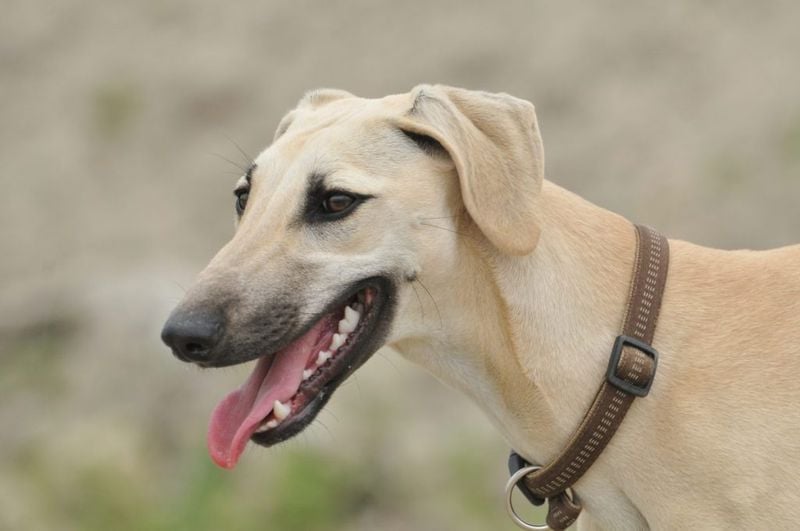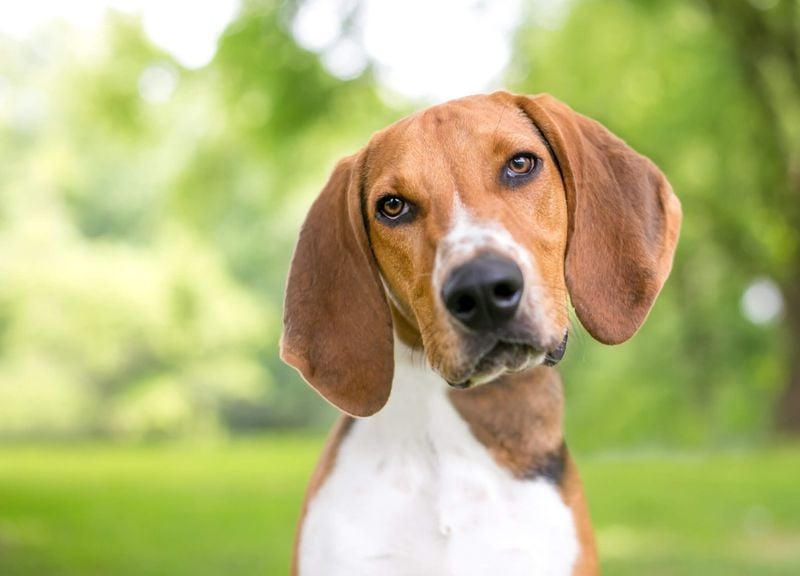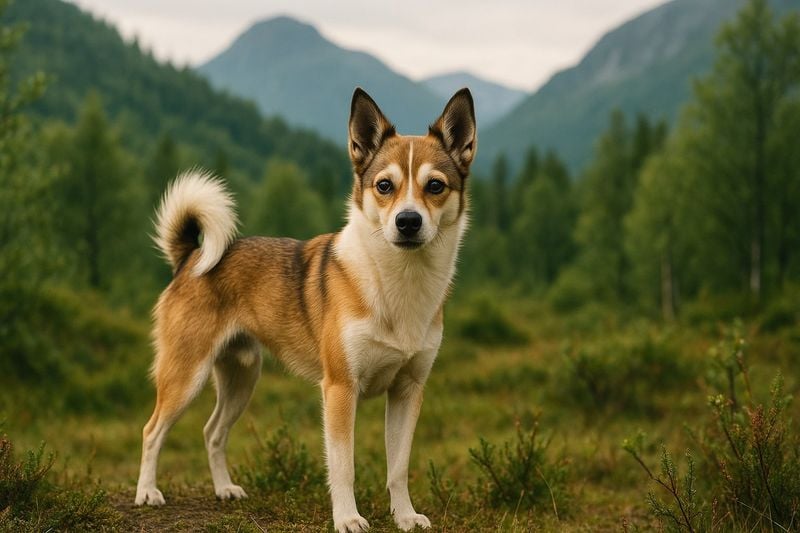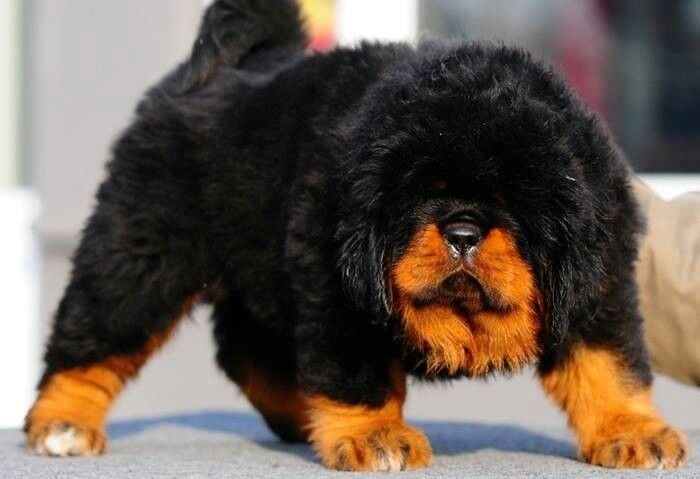The American Kennel Club Just Revealed the 23 Most Unpopular Dog Breeds of 2025
Every year, the American Kennel Club (AKC) unveils its ranking of the most popular dog breeds in the United States—a list often dominated by familiar favorites like the Labrador Retriever, French Bulldog, and Golden Retriever. But what about the breeds that don’t make the spotlight? At the opposite end of the spectrum are dozens of rare and underappreciated dogs that quietly slip through the cracks of mainstream attention.
These lesser-known breeds may lack widespread recognition, but many boast incredible histories, distinctive looks, and unique personality traits that make them just as lovable—if not more so—than their more popular counterparts. Some were bred for ancient roles in royal courts or rugged work in harsh environments; others are simply the best-kept secrets of the dog world.
For 2025, the AKC has identified 23 dog breeds that saw the lowest registration numbers across the country. While their popularity may be waning, their charm is anything but. Whether it’s due to changing lifestyles, shifting trends, or simple lack of exposure, these breeds are becoming increasingly rare in American households.
So before you decide on your next furry companion—or if you’re just curious about the pups less traveled—take a look at the 23 dog breeds whose popularity is plummeting. You might just discover your next favorite
1. Sloughi: The Arabian Greyhound
Swift as desert winds, the Sloughi brings ancient nobility to any home lucky enough to have one. These North African sighthounds date back thousands of years and were prized by Bedouin tribes for their hunting prowess.
Sloughis possess an independent spirit combined with deep loyalty to their chosen people. They’re naturally reserved with strangers but form intense bonds with their families.
Their low popularity stems partly from their rarity and partly from their need for understanding owners who respect their dignified nature. With their elegant appearance and quiet demeanor, Sloughis remain one of dogdom’s best-kept secrets.
2. English Foxhound: Britain’s Overlooked Hunting Hero
Bred for stamina rather than speed, English Foxhounds represent one of Britain’s oldest and most refined hunting breeds. Their powerful voices once echoed across the countryside during traditional fox hunts, but today they rarely find homes as companion animals.
These pack-oriented dogs thrive on canine companionship and vast open spaces. Urban living simply doesn’t suit their need to run for miles, which explains their position on this unpopularity list.
Despite their hunting heritage, they possess surprisingly gentle temperaments with children. Their exercise requirements and pack mentality make them specialized dogs for specific lifestyles rather than all-purpose pets.
3. Norwegian Lundehund: The Six-Toed Wonder
Anatomical marvels define the Norwegian Lundehund – six toes on each foot, ears that fold shut, and shoulders flexible enough to reach straight out to the sides. These unique features developed for one specialized purpose: hunting puffins along Norway’s rocky cliffs.
When puffin hunting became restricted, these dogs nearly went extinct. Today, fewer than 2,000 exist worldwide, making them genuinely rare.
Health challenges plague the breed, including a specific digestive disorder called Lundehund Syndrome. Their specialized diet requirements and potential medical needs discourage many potential owners, keeping them firmly on the unpopularity list despite their fascinating history and charming personality.
4. Grand Basset Griffon Vendéen: The Cheerful French Hunter
Beneath those shaggy eyebrows lies a mischievous spark that defines the Grand Basset Griffon Vendéen. This French hunting breed—whose name literally describes its characteristics: grand (large), basset (low-to-ground), griffon (wire-haired), Vendéen (from the Vendée region)—brings endless energy and good humor.
Their rough, tousled coats require regular maintenance, and their hunting instincts mean they’ll follow their noses regardless of commands. Training challenges arise from their independent thinking and selective hearing.
Despite their friendly, outgoing personalities, these dogs remain uncommon because they need experienced owners who understand hound behaviors. Their joyful barking also makes them poor apartment candidates in a world of increasingly urban dog owners.
5. Azawakh: The Elegant Desert Runner
Impossibly lean with almost otherworldly elegance, the Azawakh carries itself with an aristocratic bearing that reflects its heritage as a companion to nomadic tribes in West Africa’s Sahel region. Their distinctive appearance—with ribs and hip bones often visible even at healthy weights—can alarm those unfamiliar with sighthound physiology.
Fiercely loyal to their families yet aloof with strangers, Azawakhs bond deeply but selectively. Their hunting instincts remain strong, making them challenging in homes with small pets.
As one of the newest AKC-recognized breeds (2019), Azawakhs remain rare in America. Their specialized needs—including sensitivity to cold and requirement for respectful handling—further limit their appeal to the general public.
6. Belgian Laekenois: The Forgotten Fourth Belgian
While Belgian Malinois enjoy Hollywood fame in action movies, their rough-coated cousin the Laekenois lives in obscurity. Pronounced ‘Lak-in-wah,’ this fourth Belgian sheepdog variety sports a distinctive tousled coat that provides protection from harsh weather.
Originally bred to guard flocks and linen fields in Belgium, they possess strong protective instincts and work-oriented personalities. Their intelligence demands mental challenges beyond basic obedience.
As the rarest of the four Belgian herding breeds, finding a Laekenois puppy proves challenging. Their recent AKC recognition (2020) means many Americans have never encountered one. For the right active family seeking a devoted guardian, however, this hidden gem offers incredible loyalty and versatility.
7. Finnish Spitz: The Barking Bird-Finder
Known as the ‘Barking Bird Dog’ in its homeland, the Finnish Spitz developed a unique hunting style: they track game birds, then attract the hunter’s attention through rapid-fire barking while pointing with their tail and body. Finland even holds barking competitions for these vocal canines!
Their fox-like appearance—bright orange-red coat, pointed ears, and curled tail—makes them visually striking. Despite their good health and moderate exercise needs, they remain virtually unknown outside Scandinavia.
That famous barking ability contributes to their unpopularity in suburban America. When excited or alerting, their melodious voice carries impressively far. For potential owners without tolerant neighbors, this vocal tendency proves problematic despite their otherwise family-friendly temperament.
8. Polish Lowland Sheepdog: The Shaggy Herding Expert
Hidden beneath that remarkable shaggy coat lies a sharp mind and watchful gaze. Polish Lowland Sheepdogs (also called PONs from their Polish name Polski Owczarek Nizinny) developed as versatile farm dogs capable of herding, guarding, and companionship.
Their intelligence makes training a joy, but their independent thinking means they’ll analyze whether your commands make sense before obeying. These dogs form strong opinions about everything!
Their moderate popularity in Europe never translated to American shores. The grooming commitment intimidates many potential owners—without regular attention, their distinctive coat quickly mats and tangles. For families willing to invest in proper coat care, however, these loyal and clever dogs make exceptional companions.
9. Cesky Terrier: The Soft-Spoken Czech
Created by a Czech geneticist specifically as a calmer hunting terrier, the Cesky (pronounced ‘CHESS-key’) stands apart from its more excitable terrier cousins. Their distinctive silky, grayish-blue or light coffee coat requires professional grooming to maintain its characteristic shape and length.
Unlike many terriers, Ceskys typically display a more relaxed, less reactive temperament. They hunt with determination but live with surprising gentleness.
Their rarity stems partly from their relatively recent development (1940s) and limited breeding programs worldwide. Finding a puppy often involves waiting lists. For terrier lovers seeking a more moderate energy level without sacrificing hunting instinct, the Cesky represents a perfect but hard-to-find compromise.
10. Canaan Dog: Ancient Survivor of the Holy Land
When other breeds were still developing, Canaan Dogs already roamed the Middle East as pariah dogs. Depicted in ancient drawings dating back 4,000 years, these natural survivors adapted to harsh desert conditions through remarkable intelligence and resourcefulness.
Rediscovered and domesticated in the 1930s for use as military working dogs in Israel, Canaans retain strong survival instincts. Their naturally suspicious nature makes them excellent watchdogs but challenging to socialize.
Few breeders work with this ancient landrace, making puppies difficult to find. Their primitive temperament—independent, territorial, and cautious—suits experienced dog owners seeking a natural, unrefined companion. For most pet homes, however, their strong protective instincts prove too intense.
11. Harrier: The Forgotten Middle Hound
Caught between the popular Beagle and the larger English Foxhound, the medium-sized Harrier never found its footing in American homes despite centuries of refinement in England. These pack-hunting hounds traditionally pursued hares (hence the name) with remarkable stamina and determination.
Friendly and outgoing, Harriers possess the classic hound personality—good-natured but stubborn. Their powerful noses lead them into trouble as they follow scents regardless of commands.
So few Harriers exist in America that the AKC registers only about 20-30 new puppies annually. Their exercise requirements exceed what most families can provide, and their baying voice makes them poor neighbors in close quarters, explaining their continued place among America’s least common breeds.
12. Otterhound: The Waterproof Hunter on the Brink
With fewer than 800 Otterhounds estimated worldwide, this ancient British breed faces genuine extinction risk. Their rough, waterproof double coats and webbed feet developed specifically for hunting otters in cold British waters—a sport banned in 1978, nearly eliminating their purpose.
These large, boisterous dogs bring endless enthusiasm and a vocal, expressive personality. Their deep baying voice carries for miles, and their shaggy appearance requires significant grooming.
Conservation efforts continue for these gentle giants, but finding homes willing to accommodate their size, exercise needs, and grooming requirements remains challenging. Their friendly but independent nature appeals to experienced dog owners, yet most Americans never encounter this endangered breed with its bear-like appearance and joyful demeanor.
13. Bergamasco Sheepdog: The Dreadlocked Guardian
Sporting one of dogdom’s most unusual coats, the Bergamasco turns heads wherever it goes. Those distinctive mats (called ‘flocks’) aren’t neglect—they’re a weather-resistant adaptation developed over centuries in the Italian Alps, where these dogs guarded sheep through harsh winters.
Their unique coat requires minimal maintenance once properly formed, contrary to appearance. The three different hair types naturally weave together into protective layers.
Beyond their striking looks, Bergamascos offer intelligent, patient temperaments with strong problem-solving abilities. Their rarity stems partly from limited breeding programs and partly from their unusual appearance that doesn’t appeal to everyone. For families seeking a devoted, calm companion different from any other breed, the Bergamasco represents a rare treasure.
14. Pyrenean Shepherd: The Pocket-Sized Herder
Nicknamed ‘Pyr Sheps’ by enthusiasts, these small but mighty herding dogs worked alongside the much larger Great Pyrenees in the French mountains. While their larger counterparts guarded the flocks, these energetic smaller dogs actively moved and controlled the sheep with remarkable intelligence.
Their intense energy and sharp minds require proper channeling through work or sport. Without adequate mental and physical challenges, they can become neurotic and destructive.
Two distinct coat types exist—rough and smooth-faced—but both require regular brushing. Their rarity in America stems from their specialized herding abilities and high exercise needs. For active owners involved in dog sports like agility, however, the Pyrenean Shepherd offers unmatched athleticism and trainability in a compact package.
15. Dandie Dinmont Terrier: The Gentleman of Terriers
Named after a character in Sir Walter Scott’s novel ‘Guy Mannering,’ the Dandie Dinmont enjoys the distinction of being the only dog breed named for a fictional person. Their distinctive appearance—large head, long body, short legs, and ‘topknot’ of silky hair—makes them immediately recognizable.
Despite their small size, Dandies display remarkable courage and determination. Originally bred to hunt badgers and otters, they combine terrier tenacity with unexpected dignity.
Their endangered status reflects changing tastes and limited breeding programs. Finding a puppy often involves waiting lists. For terrier lovers seeking a calmer, more dignified companion without sacrificing the characteristic terrier independence, the Dandie Dinmont offers historic charm in a manageable package.
16. Skye Terrier: The Loyal Isle Dog
Famous for the story of Greyfriars Bobby—a Skye who guarded his master’s grave for 14 years—this breed embodies loyalty. Their dramatic appearance features a long, flowing coat that completely covers their short legs and frames their face like elegant drapes.
Beneath that glamorous exterior lies a determined terrier originally developed to hunt vermin on Scotland’s Isle of Skye. Their independent nature combines with surprising sensitivity.
Once popular among nobility (including Queen Victoria), Skye Terriers now face extinction, with fewer than 30 puppies registered annually in America. Their extensive grooming needs discourage casual owners, while their reserved nature with strangers means they don’t sell themselves to potential adopters. For dedicated owners, however, their devotion remains unmatched.
17. Cirneco dell’Etna: Sicily’s Ancient Hunting Hound
Often mistaken for a small Pharaoh Hound, the Cirneco dell’Etna (pronounced ‘cheer-NAY-ko’) traces its origins back over 2,500 years to ancient Sicily. Their name connects them to Mount Etna, where they hunted rabbits across rough volcanic terrain.
Athletic and primitive in appearance, these sighthounds possess remarkable agility and jumping ability. Their amber eyes and mobile ears express an alert, curious temperament.
As one of Italy’s oldest breeds, Cirnecos remain virtually unknown outside their homeland. Their recent AKC recognition (2015) hasn’t significantly increased their popularity. For active families seeking a medium-energy sighthound with a sunny disposition and manageable size, the Cirneco offers Mediterranean charm without the space requirements of larger sighthounds.
18. Entlebucher Mountain Dog: The Overlooked Swiss Worker
As the smallest of the four Swiss Mountain Dog breeds, the Entlebucher (pronounced ‘ENT-leh-boo-ker’) packs working ability into a medium-sized package. Traditionally used for herding cattle in the Alps, these tricolor dogs combine incredible strength with remarkable agility.
Their expressive faces reveal intelligence and determination. Unlike their larger Swiss cousins, Entlebuchers maintain high energy levels well into adulthood, requiring consistent exercise and mental challenges.
Their rarity stems partly from being overshadowed by the more popular Bernese Mountain Dog and partly from their intense work drive that doesn’t suit casual pet homes. For active families seeking a devoted, trainable companion for hiking, sports, or farm life, the Entlebucher offers Swiss precision and enthusiasm without the giant size.
19. American Foxhound: America’s Overlooked Native Breed
Despite being one of America’s oldest native breeds—developed by George Washington himself—the American Foxhound remains virtually unknown as a companion dog. Taller and rangier than their English cousins, these athletic hounds were created specifically for hunting in America’s challenging terrain.
Their sweet, gentle nature contrasts with their incredible stamina and loud, melodious baying voice. Music to a hunter’s ears becomes problematic in residential neighborhoods.
Primarily maintained by hunting packs rather than pet owners, American Foxhounds rarely transition to family companions despite their kind temperaments. Their intense exercise requirements and strong scenting drive make them challenging for typical pet homes. For rural families with active lifestyles, however, they offer historic American heritage and unwavering loyalty.
20. Plott Hound: The Tenacious Mountain Hunter
Named for the German Plott family who developed them in the Appalachian Mountains, these determined hunting hounds stand apart from other American breeds. Their distinctive brindle coats and unflinching courage made them specialized for tracking and treeing difficult game like bear and boar.
Unlike many hounds, Plotts weren’t bred for pack hunting but for working closely with individual hunters in challenging mountain terrain. Their loyalty to their people matches their legendary determination in the field.
As North Carolina’s state dog, they enjoy regional popularity but remain virtually unknown elsewhere. Their powerful build and high prey drive require experienced handling. For outdoorsy families seeking a trail companion with historic American roots, the Plott offers unmatched stamina and devotion.
21. Sealyham Terrier: The Vanishing Victorian Gentleman
Once favored by Hollywood royalty like Humphrey Bogart and Elizabeth Taylor, the Sealyham Terrier has fallen so far from popularity that it’s now considered one of Britain’s most endangered native breeds. Their distinctive white coats with badger-like heads were carefully developed in Wales for serious hunting.
Despite their working background, Sealyhams adapted well to companion life, offering more moderate energy than many terriers. Their calm house manners belie their fearless hunting heritage.
Specialized grooming requirements contribute to their rarity, as their white coats need regular hand-stripping to maintain proper texture. For terrier enthusiasts seeking a smaller, calmer breed with the characteristic terrier confidence, the Sealyham represents a living piece of British heritage worth preserving.
22. Lakeland Terrier: The Colorful Lake District Worker
Developed in England’s rugged Lake District to protect sheep from foxes, the Lakeland Terrier combines working ability with a jaunty personality. Their rectangular outline and distinctive beard give them a dapper appearance that belies their tough working heritage.
Available in a rainbow of colors from blue to red to wheaten, Lakelands offer visual variety alongside their spirited temperaments. Their smaller size makes them more manageable than some working terriers.
Hand-stripping their wiry coats requires specialized grooming knowledge that few modern owners possess. Their declining numbers reflect changing lifestyles and grooming preferences. For active families seeking a smaller terrier with confidence and charm, the Lakeland offers the classic terrier experience in a more moderate package.
23. Basenji: The Barkless African Hunter
Famous for their inability to bark (though they make unique yodeling sounds instead), Basenjis originated as hunting dogs in central Africa thousands of years ago. Their distinctive appearance—tightly curled tail, wrinkled forehead, and alert ears—gives them an expression of constant curiosity.
Self-grooming like cats, these fastidious dogs require minimal bathing. Their independence stems from centuries of partnership with humans rather than subservience.
Despite their exotic appeal and manageable size, Basenjis remain uncommon pets due to their challenging temperament. Their problem-solving intelligence combined with stubborn independence creates training challenges. For experienced owners who appreciate their ancient heritage and unique personality, however, the Basenji offers a fascinating glimpse into the earliest days of dog domestication.





























